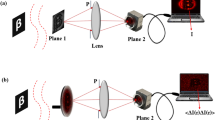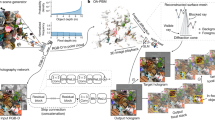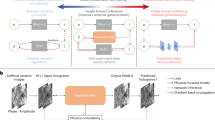Abstract
PROFESSOR LONGUET-HIGGINS1 has called attention to the remarkable property of human memory of recognizing and recalling long sequences of which at first only a small fraction is consciously remembered, and he has devised a most interesting, physically realizable mathematical model which achieves just this. He has rightly called this a temporal analogue of holography. I wish to show that there is at least one other mathematical model, which I consider to be a closer analogue of holography, because it operates with triple products of the temporal function to be recognized or recalled.
This is a preview of subscription content, access via your institution
Access options
Subscribe to this journal
Receive 51 print issues and online access
$199.00 per year
only $3.90 per issue
Buy this article
- Purchase on SpringerLink
- Instant access to full article PDF
Prices may be subject to local taxes which are calculated during checkout
Similar content being viewed by others
References
Longuet-Higgins, H. C., Nature, 217, 104 (1968).
Author information
Authors and Affiliations
Rights and permissions
About this article
Cite this article
GABOR, D. Holographic Model of Temporal Recall. Nature 217, 584 (1968). https://doi.org/10.1038/217584a0
Received:
Issue date:
DOI: https://doi.org/10.1038/217584a0
This article is cited by
-
Variable step size VLF/ELF nonlinear channel adaptive filtering algorithm based on Sigmoid function
EURASIP Journal on Advances in Signal Processing (2024)
-
A neurocomputational model for the processing of conflicting information in context-dependent decision tasks
Journal of Biological Physics (2022)
-
Analysis of Generalization of a Series of Images by Superimposed Fourier Holograms
Russian Physics Journal (2016)
-
Introduction to the Fractality Principle of Consciousness and the Sentyon Postulate
Cognitive Computation (2012)
-
A holographic model for associative memory chains
Biological Cybernetics (1977)



